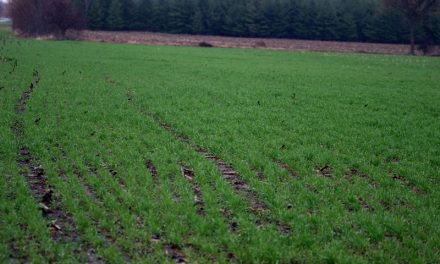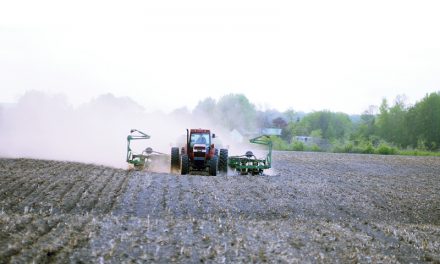By Tom Manley
AgriNews Contributor
With the new crop emerging, the next task for crop farmers is weed control. Given the cost of herbicides and fuel, farmers are interested in cost-efficient weed control strategies.
Organic farmers use a combination of integrated methods in their non-chemical weed control strategy.
The farmer’s first question is: how much weed control is enough and effective? Do we need perfectly clean fields? What weed population can we tolerate before significant yield losses occur? These questions point to the determination of the break-even point, the point where the cost of the weed population in terms of yield loss surpasses the cost of further weed suppression in terms of inputs, fuel, equipment and labour.
Some research indicates that “in visual weed pressure assessments, a scale from zero per cent to 100 percent is often used, with 85 per cent visual control considered acceptable.”
Just as a point of reference, if soybeans are worth $1,000 per tonne (actually a lot more in the organic market), yield is 1 tonne per acre, and weed control costs $100 per acre, then the farmer could tolerate about 10 percent yield loss in lieu of the cost of further weed suppression efforts. For example, a report by Kruger Seed suggests that a soybean field can tolerate 20 plants of giant foxtail at 2-4 inches high per 100 square feet before yield losses reach 10 per cent.
A critical weed control strategy is crop competitiveness. One tool is crop density. Organic farmers will typically plant cereals and soybeans at much higher rates than usually recommended to increase crop density and weed suppression, and replace some plant losses caused by mechanical weed control.
The organic farmer is also looking for traits in the variety selection that favour the crop against the weeds. A favourable trait is the speed of emergence so that farmers can hit the field mechanically to knock out young weeds while the crop is strong enough to withstand the stress.
Other genetic elements include plant height, leaf size, and bushiness so that the crop can shade and suppress weeds under the canopy. Farmers also search for root systems that can compete with weeds, reach moisture, and forage for nutrients.
In recent years, the Organic Science Clusters paid particular attention to organic crop genetics and demonstrated some impressive results. When plant scientists breed and select plants for these attributes in an organic production system, they obtain cultivars that will outperform mainstream cultivars while under organic production.
Dr. Stephen Fox and Dr. Jennifer Mitchell Fetch, both plant breeders with Agriculture and Agri-Food Canada (AAFC), developed AAC Tradition, which was registered in 2014 as a Canadian Northern Hard Red Wheat. Developed in an organic breeding program, it is now commercially available to growers across the Prairies. AAC Tradition had yields nine per cent higher and height about 5 cm taller than the reference cultivar in registration trials.
Long-term planning is key to the organic farmer’s weed suppression strategy. A long crop rotation along with strategic tillage will suppress perennial weeds. Cover crops do wonders in suppressing annual weeds as well as delivering many other benefits such as increased organic matter in the soil, improvements to the soil structure, and the retention of nutrients and moisture.
While critical to the success of the organic crop, the strategies mentioned above are not visible from the road. The neighbours only see the visible part of the organic weed suppression strategy, which is the mechanical weed control.
One part of mechanical weed control is the concept of flushing the soil’s seed bank. This means a surface tillage action to bring weed seeds near the surface and sunlight. Within five days, the weeds have germinated and another mechanical action will eliminate them.
Understanding this concept, the organic farmer will conduct two field operations spaced about 5 days apart to flush the seed bank. About three days after the second operation, the crop is planted while the weeds are germinating. About three days later, the farmer conducts a pre-emergence weed control with a tine weeder or a rotary hoe to eliminate weeds in the white root stage.
Then the farmer waits until the crop has emerged (about the three leaf stage depending on the crop). Another pass with a tine weeder will eliminate the young weeds again. One or two more passes before the crop reaches the equipment axles, such as a sweep cultivator in a row crop, will complete the weed control actions for the season. During the last weed control action in a cereal crop, the farmer will broadcast red clover with the dual purpose of a cover crop for both weed suppression and nitrogen fixation.
During the season, the organic fields are surprisingly clean, at least clean enough to tolerate minimal yield loss. Effective weed control and the general reduction in input costs explain why some organic farmers would remain organic even if the organic market price for their crops was the same as the conventional market price. Organic production is simply more profitable when implemented effectively.
References:
https://www.krugerseed.com/en-us/agronomy-library/weed-competition-soybean.html












